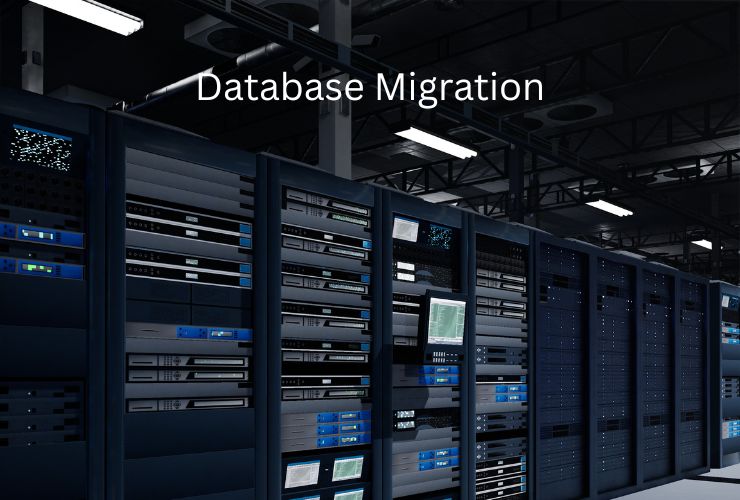Moving databases to the cloud has become a keystone of digital transformation. Cloud databases provide the scalability, cost, security, and performance elasticity needed to help keep businesses competitive. Digital transformation can, however, be thwarted if a cloud migration fails to address the necessary planning, resulting in downtime and lost data or missing compliance deadlines. By focusing on the best practices of cloud database migration, organizations can leverage cost-optimized, secure, and high-performing databases.
Why Migrate Cloud Databases
- Scalability – Dynamically scale resources based on changing workload requirements.
- Cost Optimization – Use a pay-as-you-go infrastructure to scale down costs.
- Enhanced Security – Utilize cloud-native encryption, Identity and Access Management policies, and compliance controls.
- Innovation – Take advantage of cloud-native ecosystems to leverage AI, analytics, and automation.
- Business Continuity – Improve recovery from failures with managed services to enforce high availability.
Cloud Database Migration Best Practices
1. Assess & Plan Early
Conduct a complete assessment of the existing database environment, dependencies, and workloads. Identify the volume of data, level of schema complexity, and compliance requests to determine the appropriate migration strategy (lift & shift, re-platforming, or re-architecting).
2. Select the Right Cloud Provider & Database Service
Assess cloud providers: AWS RDS/Aurora, Azure SQL Database, Google Cloud SQL. Evaluate:
- Supported database engines
- Service Level Agreements for uptime and performance.
- Security and compliance certifications (HIPAA, PCI DSS, GDPR).
- Pricing models.
3. Utilize Automation Repositories
Use native cloud tools to expedite the process and reduce manual effort and downtime:
- AWS Database Migration Service (DMS).
- Azure Database Migration Service.
- Google Database Migration Service.
- Automation accelerates the migration while reducing errors and risk.
4. Ensure Security & Compliance From Day 1
Encrypt data both in transit and at rest. Ensure appropriate identity and access management (IAM) is configured, adequately configured audit logs, compliance checks are available, and ensure masking and tokenization for sensitive data is on-boarded.
5. Validate Data Integrity
Pre-migration, conduct checks. Post-migration, conduct checks. (Row counts, checksum checks, validate transactions). Ensure migration does not corrupt data or lose it altogether.
6. Implement Phased Migration
Instead of migrating everything at once, implement a phased approach by utilizing:
- Replication & Synchronization – Keep source in sync with target.
- Dual-Write / CDC – Write to both.
8. Testing & Continual Monitoring
Before going live, you should perform a comprehensive end-to-end testing of your workloads. Setting up real-time monitoring using CloudWatch (AWS), Azure Monitor, or Google Cloud Operations Suite can give you insights on performance, cost problems, or availability.
9. Rollback & Disaster Recovery Plan
Always have a rollback plan if your migration doesn’t succeed. You should be using automated backups, point-in-time recovery and replicating to secondary regions for business continuity.
Benefits of Following Best Practices
- Seamless, low-risk migration strategy
- No or limited downtime for mission-critical applications
- Better security and compliance profile
- Transitioned database performance to the cloud
- Better cost, and partionability
- Confidence benchmarking modernization
Why Choose Empirical Edge Inc. for your Database Migration?
- Proven Methodology – Our process, from initial discovery to post-migration analysis and optimization, is comprehensive and reduces your respective risks and ensures optimal performance.
- Zero-Risk, Zero-downtime migration solution – With parallel testing, failover strategies, and rollback documentation, business continuity remains our priority.
- Compliance-first migration – Thorough support for encryption, audit logs, and compliance with any regulated industry.
- Accompanying Partnership – We don’t go away after the migration. Post-migration support, monitoring, and optimization means your systems remain relevant now and in the future.
Conclusion
Cloud database migration is a vast opportunity that is powerful only with the right strategy. By taking opportunities to assess and resize workloads, automate as much as possible, protect and prioritize security, and phased migrations, businesses can deliver transition projects with little to now downtime or data loss. Not only do best practices of cloud database migration protect the operation but give organizations leverage in realizing the overall value of cloud innovation.










